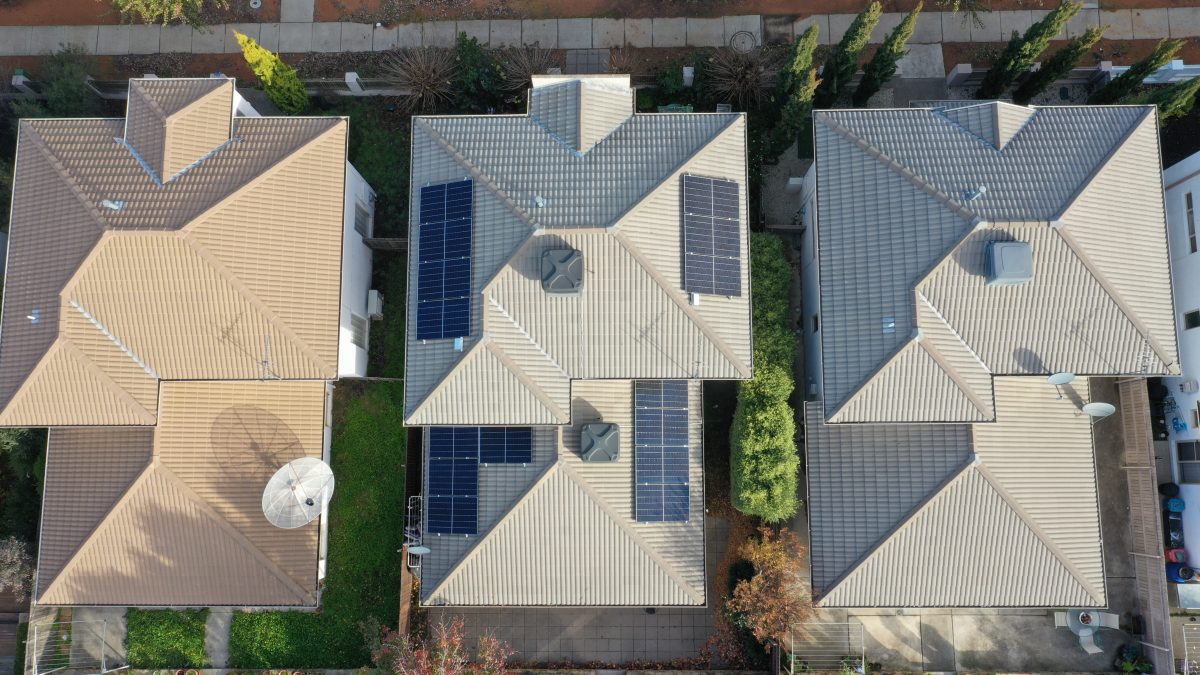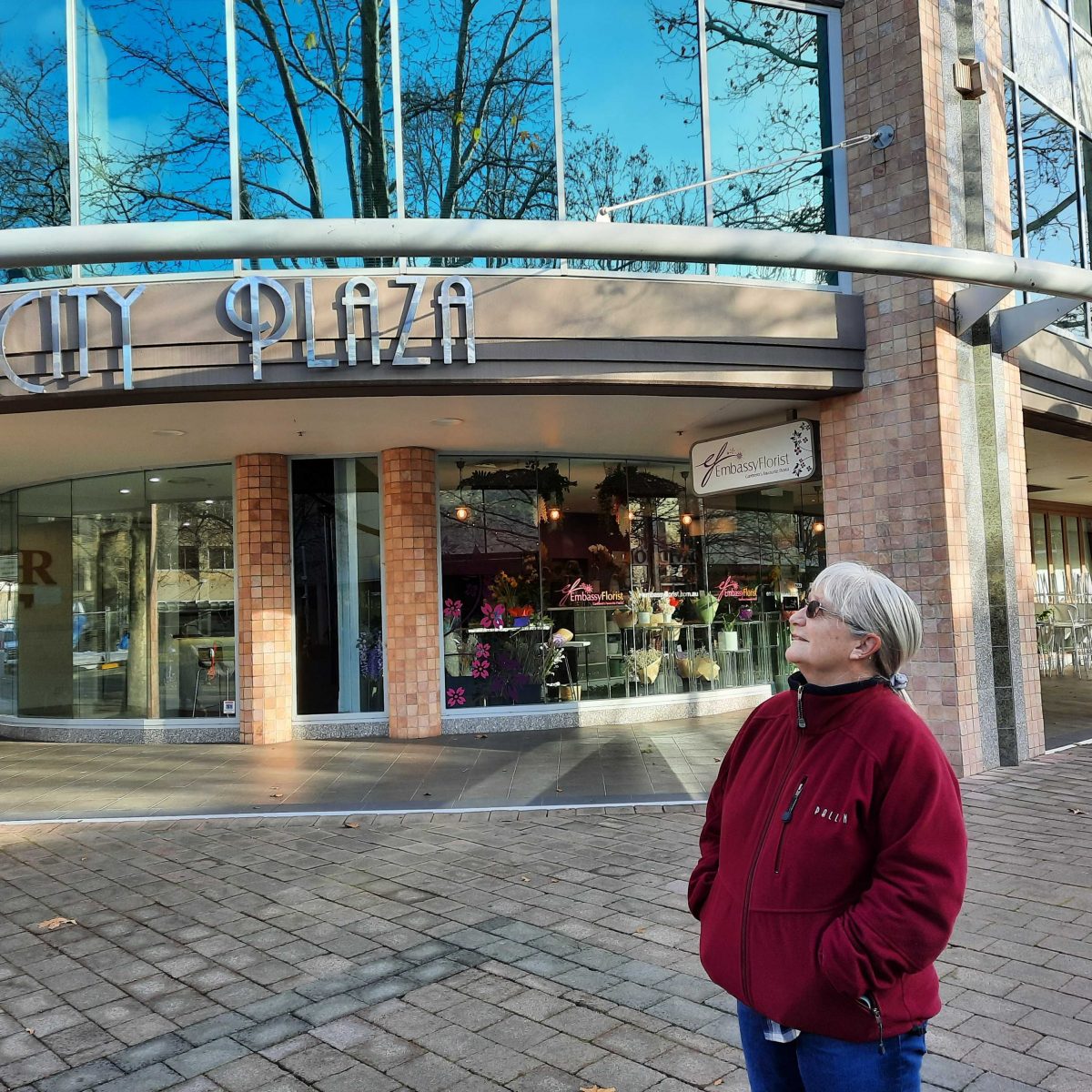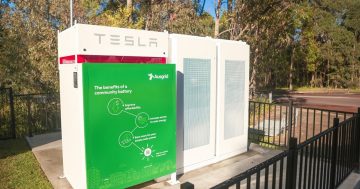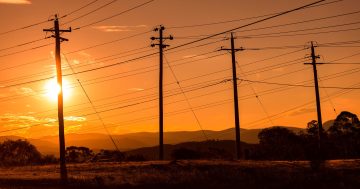
Rooftop solar installation in Canberra has boomed under the Sustainable Household Scheme. Photo: Mondiaux Solar.
Government assistance for rooftop solar installation is changing with the ACT Government tightening eligibility, but it is also partnering with the Commonwealth in a new scheme aimed at apartment buildings.
The changes to eligibility come halfway through the popular Sustainable Household Scheme and have blindsided the industry, which is warning of job losses and business closures.
The government is repositioning the scheme to support households wanting to switch from gas to electricity, and to do that, eligibility for solar panels will be restricted to homeowners who most need government support.
That means standalone homes with an unimproved value (UV) below $750,000 in 2022 will still be eligible for the SHS for all products except solar.
To be eligible for solar through the SHS, applicants must have a pensioner concession card, a veterans gold card, or a health care card, or the property have a UV below $450,000.
The UV must be below $300,000 for units, which the government says will capture over 90 per cent of this segment for all SHS products.
The next phase of the scheme will help households upgrade their heating and cooling to fully electric, install hot water pumps and electric stove tops, and purchase electric vehicles and charging infrastructure, battery storage systems and ceiling insulation.
Chief Minister Andrew Barr said the scheme, which will receive a further $80 million in Tuesday’s Budget, needed to focus more on low to middle incomes and electrification of households.
“If you’re sitting on land worth more than three-quarters of a million dollars, you probably don’t need an interest-free loan from the government to put solar panels on your roof,” he said.
“What we want the loan to be there for is for households who don’t have either significant equity in their mortgage or households who don’t have $10,000 sitting around to invest in making the switch.”
SolarHub CEO Benn Masters said the scheme probably should have been designed this way in the first place, saying he supports help going to those who most need it.
But the industry was under the impression the SHS would continue in its initial state until 2026, and the midway change would be a shock to the industry, especially for those companies which specialised only in solar.
“The solar industry will contract at least 50 per cent, probably more, and go back to what it was before the scheme started,” Mr Masters said.
“That’s going to mean job losses. There’s no way companies are going to avoid that.”
Mr Masters said applicants would have until the end of the week to sign up under the old rules and installation would need to be completed by the end of September, so he expected a rush until then.
But he welcomed the new Commonwealth and ACT Government funding for the installation of shared rooftop solar on multi-unit apartments, announced Monday morning by Climate Change and Energy Minister Chris Bowen and Chief Minister Andrew Barr.
“That will help,” he said.

Longtime City Plaza Libby Vogt: “This is going to help. It’s very much on our agenda.” Photo: Ian Bushnell.
The government says the $3.6 million investment will provide rebates and concessional loans to body corporates considering installing rooftop solar.
It expects more than 2100 households to benefit, providing a 35 per cent reduction in electricity bills for those apartment dwellers. However, that would depend on the building and the strata arrangements.
Multi-dwelling body corporates can access up to $100,000, half through a Commonwealth rebate or grant through the Solar Banks initiative and half from an interest-free loan offered by the ACT Government as part of the Sustainable Household Scheme.
“This will make a big difference to those stratas for those apartments thinking about whether to go down the solar road, wanting to but finding it very difficult. This will make a difference to those decisions,” Mr Bowen said.
Chief Minister Andrew Barr said the scheme was aimed at older apartments that weren’t built with solar in mind but could also extend to certain townhouse developments.
“Apartments are the main focus, but I guess you could also extend the definition if you want to include what we would know as townhouses if they are in a strata arrangement and have common space,” Mr Barr said.
Both Mr Barr and Mr Bowen indicated that the scheme could be extended if it proved popular.
Civium Property Group’s Alex Boundy said it was a timely announcement because how to pay for a solar installation had always been a sticking point among different members of body corporates.
“A lot of our newer buildings, they come with solar from the get-go, and it is the older style when we’re looking at like City Plaza and some of the other style apartment complexes on the outer edges of Canberra that it’s a little bit more complex,” he said.
“This could be the final push in the right direction for them to get them across the line.”
A longtime resident of City Plaza, Libby Vogt, said the residents had talked about installing solar for a long time, but the cost and the logistics had always been issues.
“So this is going to help. It’s very much on our agenda,” she said.
“I’m sure that will make a big difference because our electricity bills are very high, and that will make a huge difference, and with electric cars, that’s going to be an issue, so we’re going to have to look at that in the basement.”
Original Article published by Ian Bushnell on Riotact.










